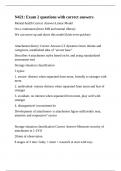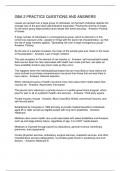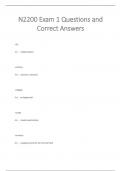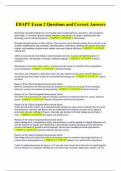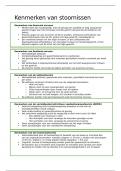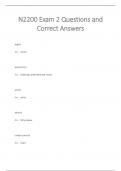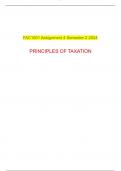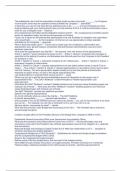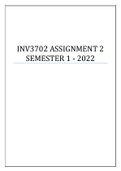Exam (elaborations)
N421: Exam 2 questions with correct answers
- Course
- Institution
Mental health Correct Answer-Linear Model On a continuum (btwn MH and mental illness) We can move up and down this model (kids even quicker) Attachment theory Correct Answer-LT dynamics btwn infants and caregivers, established idea of "secure base" Describes 4 attachment styles based on bx an...
[Show more]
